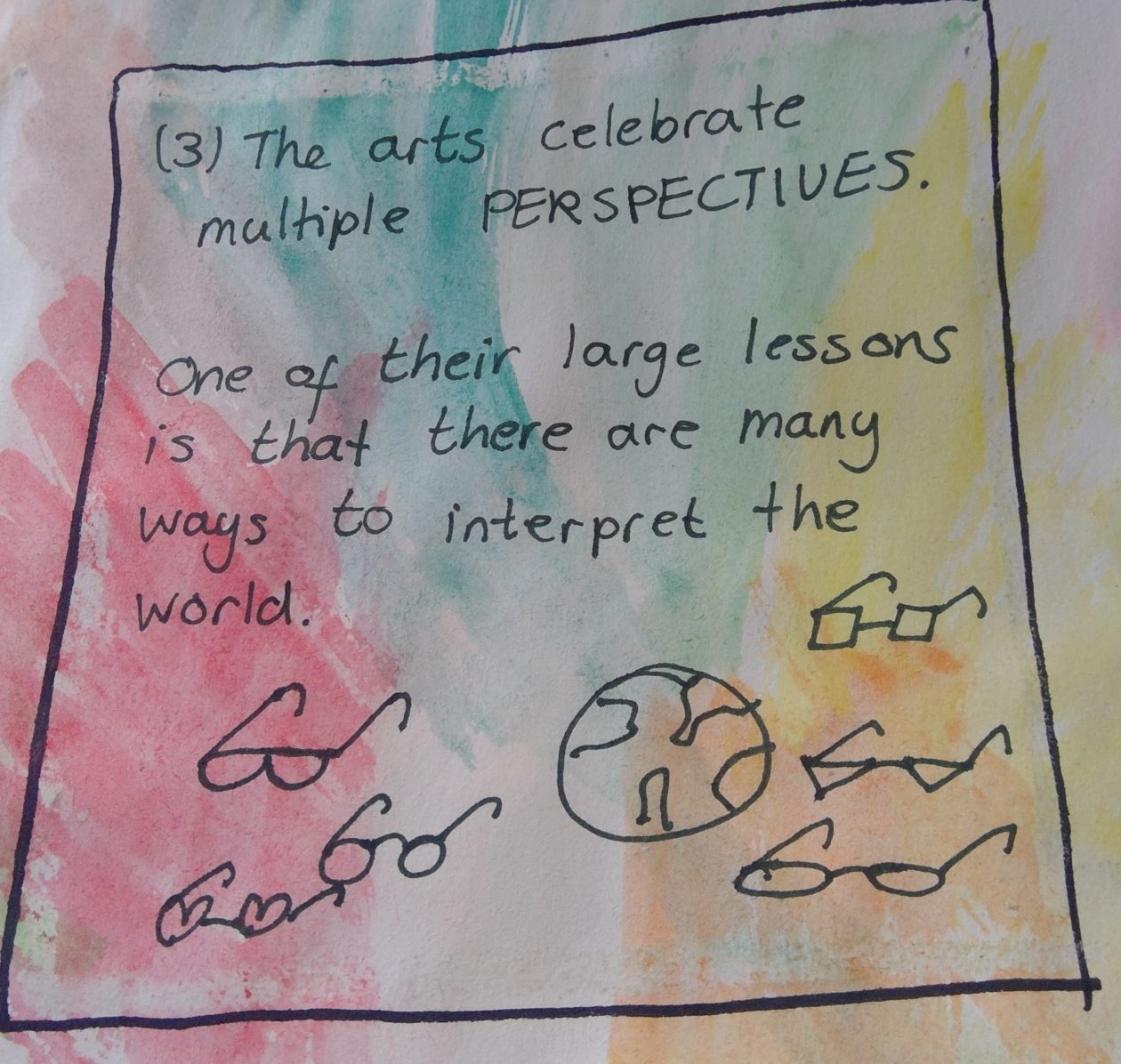This week we looked into the radical art program of Room 13. This is particularly relevant to the Curriculum for Excellence which offers a wide scope of activities based on experiences and outcomes rather than statutory guidance. A critical based arts practice advocated in Social and Critical Practices in Art Education. (Atkinson, Dash, 2005), sees art not as busy work or entertainment but rather as a venue for deep critical thinking. The making of art is a combination of method, thought, process and product. All of which can be seen in the enterprise model of Room 13.
The Thomas Tallis School pedagogy shows what is possible when we privilege the Arts in the curriculum. Here Art is used as a tool for learning and not as an accessory to education.

Reflecting on my time at school and on placement, much of the art work dealt in the replication of a teacher’s creation or imitation of an artist style. While this is useful in developing technical skill there does not seem to be time set aside for child to be creatively engaged in art. While it could be argued this gives child the opportunity to be exposed to different artists, the overwhelming majority of these seem to be white, western men to the exclusion of other voices and views.
In my future practice, I will aim to integrate art into the curriculum in a holistic fashion. I will ensure that I carefully curate the work of living artists to reflect the diverse society we live in.

References
Atkinson, Dash (2005) Social and Critical Practices in Art Education. Trentham Books Ltd
Eisner, E. (2002) The Arts and Creation of Minds. New Haven: Yale University Press.
The Thomas Tallis School Pedagogy Wheel. Available at https://www.thomastallisschool.com/uploads/2/2/8/7/2287089/tallis_habits_pedagogy_wheel_april_2016.pdf (Accessed: 4 January 2021)


